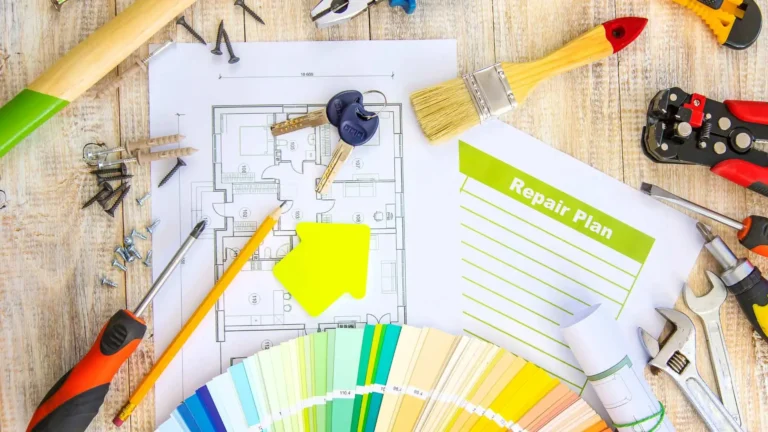Table of Contents
If you wish to give your home a dreamy makeover, simple renovations are all you need. However, renovations require spending, and without a clear budget, they might cost more than expected. Creating a Home Renovation Money Plan helps you track every expense from start to finish, avoid surprises, and ensure your project stays on track.
Recording expenses can make this process simple and easy. With tools like Beem’s AI Wallet, Beem Card, and Beem Pass, you can organise payments and receive alerts for any unexpected costs. Thus, you can easily manage your renovation budget and keep it under control throughout your project.
Why a Clear Money Plan is Essential for Home Renovation
Having a clear money plan is necessary because renovations can cost more than you expect or imagine. A budget plan helps you avoid financial problems later and enables you to make informed choices during the renovation.
Beem’s AI Wallet can keep track of all your renovation expenses. From structure fees to the very finishing touches, it records every cost so you can always know if you are spending within the budget. This helps you manage money more easily and makes the whole renovation process less stressful.
Key Phases of a Home Renovation Budget
Phase 1: Planning and Design
Before starting the renovation, it’s essential to plan and design the entire process from start to finish. This process typically involves tasks such as creating architectural designs, determining the cost of contractors, and obtaining necessary permits. This helps manage the project and protect it from unexpected problems.
Beem Card helps by tracking all early expenses, like design and consultation fees. It logs these amounts accurately, ensuring you don’t spend too much on services you don’t want or need. This will help you create a clear and manageable budget from the very beginning.
Phase 2: Demolition and Structural Work
This phase involves dismantling existing structures, such as walls and fixtures, to make way for the new design and construction. It is important, and this work typically consumes a significant portion of the budget.
Beem’s AI Wallet helps by giving you a separate budget for demolition and structural work. It tracks your spending as the project progresses, allowing you to stay within your budget during this phase.
Phase 3: Materials and Fixtures
After completing the main design, it’s time to purchase all the necessary materials and fixtures for the renovation. These can include flooring, lighting, cabinets, countertops, and all the other items that make your home look good and complete the work. Selecting the right materials is important because they impact both the style and function of your rooms.
Beem Pass makes managing such costs easier, especially when renovating with a partner or friend. It helps you keep track of who is paying for what, so the expenses are shared fairly and everything stays organised. This way, there will be no confusion or disagreements about money during this time of the renovation.
Phase 4: Labor and Final Touches
Labor costs can add up quickly, so it’s important to know the labor costs before this phase even starts. These fees cover the installation, painting, and finishing work, like landscaping, and such costs can add up quickly.
Beem’s AI Wallet helps by tracking all labour and final touch expenses. It will confirm to you and ensure that every bill of yours is paid on time, helping keep the final budget on track with what you imagine and avoiding surprises at the end.
Also Read: Moving in Together? Smart Cost-Sharing and Cohabitation Money Agreements
Building a Renovation Budget: Key Considerations
Getting Accurate Contractor Estimates
Before starting a renovation, it is essential to obtain detailed, accurate, and precise cost proposals from contractors. This helps us avoid unexpected costs and ensures that everyone understands the project and budget clearly from the outset.
The Beem Card can help you keep track of all payments made to contractors, avoiding overcharges afterwards. The AI Wallet can break down contractor fees into categories, such as labour and materials, so you know exactly where your money is going.
Anticipating Material Costs
The price of materials can often fluctuate due to supply chain issues or price increases. It’s a good idea to keep some extra money set aside for any unexpected price increases.
Beem’s AI Wallet helps by surveying your material purchases and price changes. It allows you to update your budget quickly, enabling you to handle any cost changes that may arise during the renovation.
Accounting for Permits, Licenses, and Inspection Fees
Many home renovations require permits and inspections, which incur additional costs. You should include these costs in your budget from the outset. Permit fees can range from $50 to $3,000, depending on the size and type of the project.
Beem’s AI Wallet helps you keep track of fees for permits and inspections. It makes sure you follow all legal rules. It also helps you avoid fines and delays by reminding you to make timely payments.
Contingency Planning: How to Account for Unexpected Renovation Costs
Setting a Contingency Fund for Surprises
Permits and inspections incur additional costs, and many renovations require them. These costs are included in your budget. Permit fees can range from $50 to $3,000. It depends on the project type and size.
Beem’s AI Wallet helps track permit and inspection fees. It makes sure you follow the law. It also helps avoid fines or delays by reminding you to make timely payments.
Tracking Budget Adjustments and Overages
Keep a track of any changes to your original budget plan. Adjust your plans quickly if costs exceed your expectations or the planned amount. A contingency fund helps cover extra costs without cutting other parts of the project.
Beem’s AI Wallet tracks budget changes over time and alerts you if spending exceeds limits. This helps you manage costs as your renovation goes further.
Why You Should Avoid Cutting Corners on Quality
Cutting corners might save your money now, but it can cost you more for repairs later. That’s why it’s essential to stick to your original plan and budget for a long-lasting renovation.
Beem Card helps you maintain high quality even while managing costs. It ensures that you only pay for high-quality materials and skilled labor without overspending on renovation.
Also Read: How to Build a Flexible Weekend Getaway Template
Financial Strategies for Renovation Payments
Financing Your Renovation
If you have run out of savings while renovating, consider exploring financing options such as home loans, personal loans, or credit cards with low or no interest during this period. These can help extend the expenses and keep your renovation on track without depleting your savings.
Beem’s Instant Cash helps cover short-term financial gaps during the renovation, keeping your cash flow steady so work can continue uninterrupted.
Using a Credit Card for Renovation Purchases
Many use credit cards for convenience when paying for renovation costs. It’s essential to pay your full balance on time to avoid high-interest charges for late payments, which can increase your overall expenses.
Beem Card helps you track all your credit card payments for renovations, sends you reminders to pay on time, and helps build your credit score while managing your renovation costs smoothly.
Common Mistakes to Avoid When Renovating Your Home
Underestimating Costs or Over-Improving
You can spend more while renovating. When people are excited about renovating, they often buy luxury items that weren’t truly necessary and weren’t part of the original plan. This significantly impacts the entire budget, potentially leading to financial difficulties later. To avoid this, focus on what is most important for your health.
Beem’s AI Wallet can help by tracking your spending in each area of the renovation. It allows you to set clear limits for each phase, ensuring you don’t exceed your budget and maintain control over your spending.
Failing to Track Changes to Your Budget
Renovations face challenges such as an increase in prices, or perhaps you want to add something new during the renovation. If you don’t update these items in your budget, you might spend more than you can afford or plan for at the beginning of the renovation, and you can quickly get in debt.
Beem’s AI Wallet records all your expenses as soon as they happen, making it easy for you to see how your budget changes and adjust your plans accordingly to stay within the financial limits.
Not Having a Clear End Date
You always need a deadline for every work done because, without a clear deadline, your home renovation can take longer than you have planned. This can even result in additional costs, as the more work stretches out, the more delays accumulate. Setting a realistic finish date is important; it keeps everyone working according to the schedule.
Beem’s AI Wallet helps you set milestones and deadlines to keep the process on track. This will keep your renovation on time and on budget.
Conclusion — Mastering Your Home Renovation Budget
Successful home renovations depend heavily on Ideal planning, practical budgeting, and spending under control. Dividing your renovation into phases and keeping track of every expense can help you avoid financial pressure throughout the process. Setting aside emergency funds also helps manage unplanned expenses that may arise during an emergency.
With Beem’s AI Wallet, Beem Card, Instant Cash, and Beem Pass, you can make this process easier for yourself. These tools help you manage every expense, track it, make payments, and maintain financial control throughout the renovation process.
FAQs on Home Renovation Money Plan
How much should I budget for a home renovation?
The budget depends on several factors, including the type and size of the home renovation, the scope of work, and the type of material you choose for your home. For budget planning, set aside 10–20% of your home’s value for a full renovation, and always include a 10–15% emergency fund for unexpected expenses.
How do I manage unexpected costs during a renovation?
To manage unexpected expenses, create an emergency fund from the start of the renovation. Track all expenses regularly, both small and large, and adjust plans without compromising important work. Use Beem’s tools, such as Beem’s AI Wallet, to identify any unnecessary spending.
What are the most common financial mistakes during a home renovation?
Failing to consider the actual cost, spending extras on items not planned from the start, not tracking expenses, and not having a clear project end date are common mistakes that can occur during a home renovation.
How can Beem tools help me manage my renovation budget?
Beem’s AI Wallet helps you track all expenses, alerts you when you exceed your limit, and organizes all your payments. Beem Card manages payments to contractors, suppliers, and labourers, and provides quick funds if needed. Beem Pass helps you share costs when renovating with others and reminds you not to delay fees.
Should I finance my home renovation, or save up first?
If you are short on savings, you can try options like home equity loans, personal loans, or credit with low-interest rates. Beem’s Instant Cash can help you fill short-term gaps to keep money flowing during renovations.















































